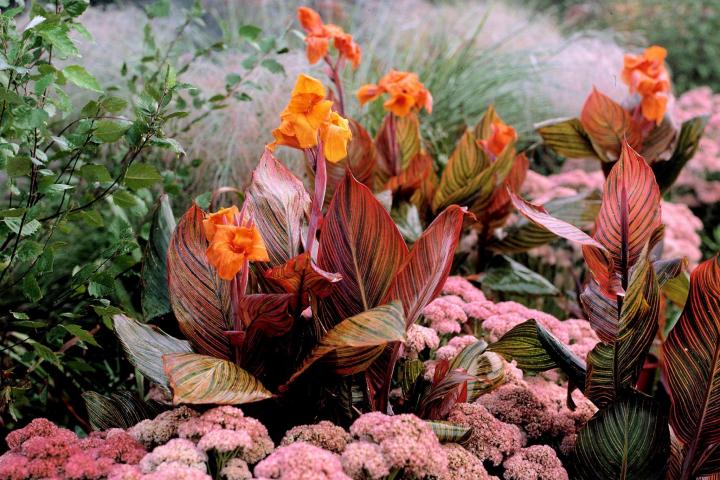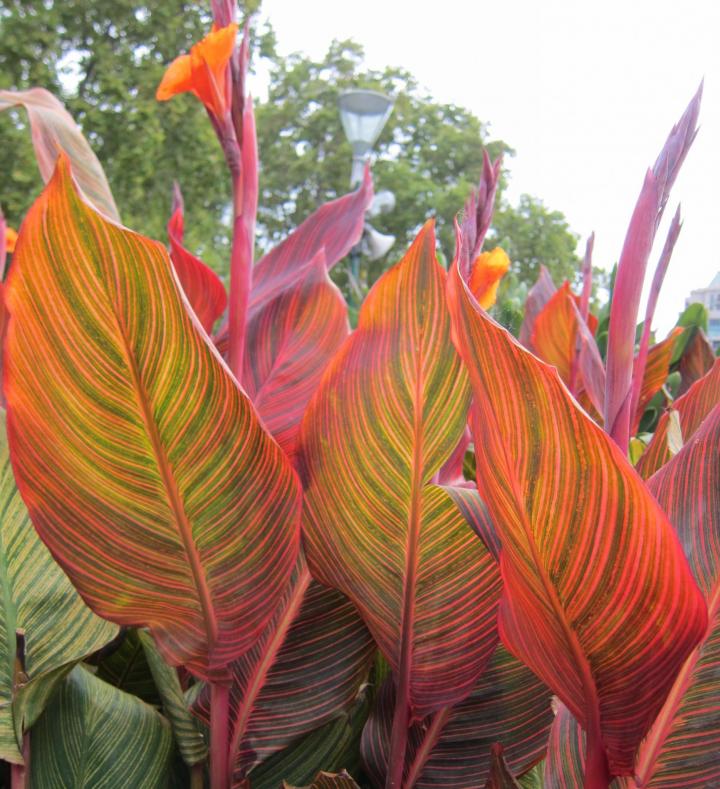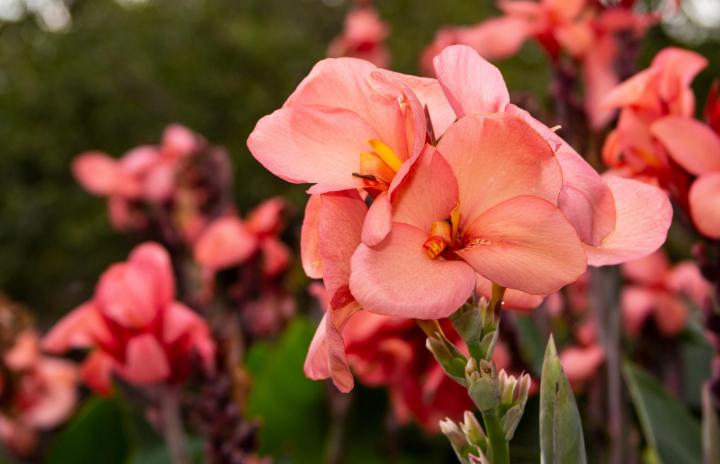
Canna Tropicanna®: The original Tropicanna, Tropicanna Gold, and Tropicanna Black
Canna Lily Growing Guide: How to Plant Canna Bulbs
ADVERTISEMENT
As far as pests goes, I had a terrible time this year with Japanese beetles attacking my canna leaves; I had already put traps out, but the beetles were overwhelming for awhile.
I live in Northern California I believe zone 8. We purchased a home in the spring with a pond and the most beautiful flowering plants came up out of nowhere seemingly overnight. My google search tells me they are canna lily’s. I have enjoyed them all summer long and now wondering how and when do I cut/prune them? I’m hoping they come back year after year. I also have several large pots with them. I’m not a gardener but I’m trying to learn. Appreciate any advice.
Thanks so much!
You’re in luck. In warm climates (USDA hardiness zones 8 to 10), canna lilies can simply be left outside in the ground. If you live in a colder climate, you can lose them so dig up the roots and throw them in a pot to put in the garage.
In terms of pruning, you really don’t have to do anything if the foliage looks good. If the leaves look trashy, you can trim out the dead foliage and giving it room to grow new foliage. At the end of the season, in cooler climates, you may see that the cannas die back as the nights get colder. You can chop them down to the ground and they’ll come back again next year.
If you have canna in pots, you can clean them up throughout the season. Sometimes if it gets really hot, the leaves can get sunburnt. You don’t ever want to cut the main stem. Just trim off the brown leaves at the bottom near the stem. You can also just trim the tops of leaves if they’re brown (like a haircut).
I grew Cana Lilly last year in an old galvanized trash can and got a surprise freeze last winter . I did not get to dig them up and thought they all died. I am in zone 4b. I reused the container for some catnip I got at a yardsale and just stuck them in the same soil. It is now August and I just found a canas come up . How is this possible?
With enough protection, they can survive colder conditions! The pot that you put kept them in must have been just enough to keep them alive.


 Credit:
Credit:  Image: Credit: Mick49/Shutterstock
Image: Credit: Mick49/Shutterstock







Comments